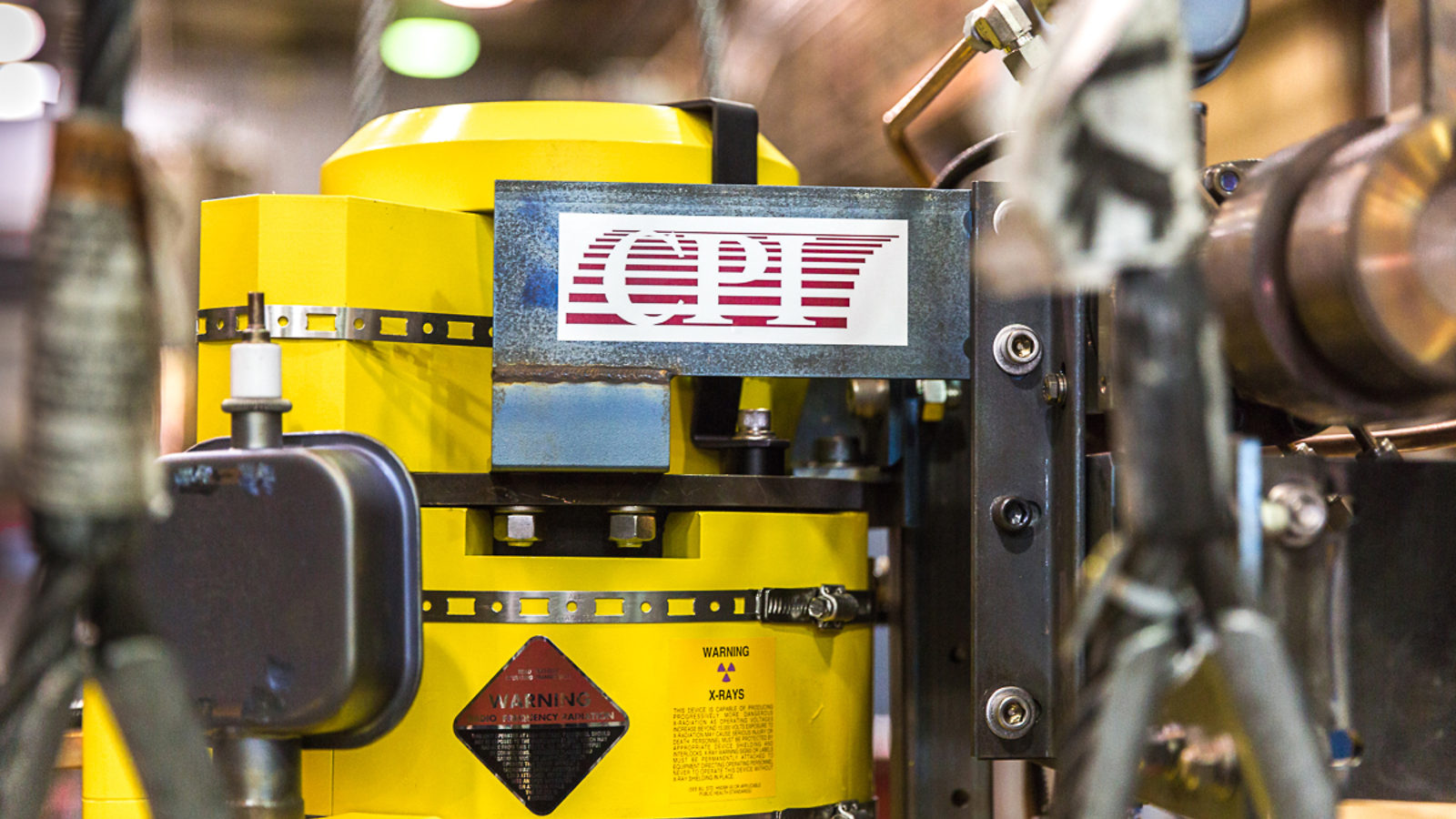Klystrons, lightly humming machines that convert electron beams into microwaves, are the heart of linear accelerators in laboratories and medical facilities around the world. They are also difficult to manufacture, and for decades they have been produced by just a few laboratories.
Now, thanks to a collaboration between the Department of Energy’s SLAC National Accelerator Laboratory and Communications & Power Industries, it’s possible to buy commercially manufactured klystrons that are powerful enough to accelerate electrons to high energies for next-generation physics experiments.
As part of a cooperative agreement, CPI has adapted a SLAC design to build two ultra-high-power “XL5” klystrons. They tested the first one at SLAC and delivered it in February to the Compact Linear Collider, or CLIC, experiment at the European particle physics laboratory CERN. The second klystron is scheduled to arrive at SLAC for high-power testing in April, and the company says it’s in talks with several more potential customers.
The agreement opens the door to routine commercial manufacturing of these powerful devices.
“Until now, SLAC has been the only source of these ultra-high-power klystrons,” says Norbert Holtkamp, SLAC’s deputy director and head of the lab’s Accelerator Directorate. “We have built about 30 over the years for experiments at Brookhaven and Lawrence Livermore national laboratories, CERN, the Paul Scherrer Institute in Switzerland and Elettra Sincrotrone Trieste in Italy.
“Transferring this technology to industry not only creates a commercial market for these devices,” he says, “but will also support the broader needs of laboratories in the United States and around the world that are engaged in high-power radio-frequency science and technology.”
A win-win agreement
In 2011, CPI entered into a collaborative agreement with SLAC that marries the lab’s capabilities with the company’s ability to produce klystrons on a commercial scale.
CPI adapted SLAC’s klystron design to better interface with equipment at CERN’s CLIC experiment and to make it easier to manufacture. Then it built the klystron and brought it to SLAC for testing at a unique facility that can power the tube with 400,000-volt pulses.
“It would have been at least a million-dollar investment for the company to obtain the high-voltage power supply needed for testing,” says Adam Balkcum, the project engineer for CPI. The ability to use existing SLAC test facilities and equipment, he says, helped make the project economically feasible.
There are many business reasons for a research lab to buy klystrons from a commercial supplier, including the availability of warranties and service, commercial contract terms and economies of scale that could result in lower costs, says Peter Kolda, business development manager for CPI’s Microwave Power Products Division.
Likewise, it makes sense for SLAC to leave the manufacturing to others, Holtkamp says, so it can concentrate on inventing and developing advanced technology for future generations of accelerators—an important part of the DOE Office of High Energy Physics mission of accelerator stewardship.
The agreement has historic resonance for both parties. Palo Alto-based CPI is a spinoff of Varian Associates, which was founded in 1948 by electrical engineers Russell and Sigurd Varian, the inventors of the klystron.
The two-mile-long SLAC linear accelerator used 240 klystrons to accelerate electrons and positrons to nearly light speed for high-energy physics experiments. Klystrons power SLAC’s Linac Coherent Light Source X-ray laser today, and the technology is used extensively in communications, medical technology and industrial, radar and defense applications.
A spinoff with many applications
SLAC began to develop the XL series of klystrons in 1989 as part of a push by the DOE’s Office of High Energy Physics to develop technology for the proposed Next Linear Collider. Even though the NLC was not constructed, these klystrons have made numerous other advances and applications possible.
“The XL klystron operates at four times the frequency of the klystrons in SLAC’s linac,” says Michael Fazio, who leads the SLAC division that developed the XL. “This allows you to boost particles to the same high energies with a much more compact accelerator system—maybe even a transportable one.”
SLAC has built XL klystrons for an experimental program at Lawrence Livermore National Laboratory that is seeking more effective ways to detect nuclear materials in cargo containers and trucks at a port or border.
“The XL5 runs at extremely high power—50 megawatts—and at a fairly high frequency for that power, almost 12 GHz,” Kolda says. For comparison, a kitchen microwave oven operates at 1000 watts; it would require 50,000 of them to produce the same level of peak power as the XL5.
“Having those two things as requirements at the same time is what makes it difficult,” Kolda says. “I only know of one other supplier that’s done anything close to this.”
Answering a call to fuel innovation
The agreement helps fulfill a 2011 White House directive that calls for federal research labs to fuel innovation by significantly increasing the amount of technology they transfer to industry.
“This is exactly the kind of thing the US Department of Energy is trying to encourage,” says James Siegrist, associate director of the DOE Office of High Energy Physics. “Basic research labs are not set up to turn inventions into commercial products. By partnering with industry, we can get innovations out into the marketplace, create jobs, products and services and help keep US industry globally competitive.”
A version of this article was originally published by SLAC.



